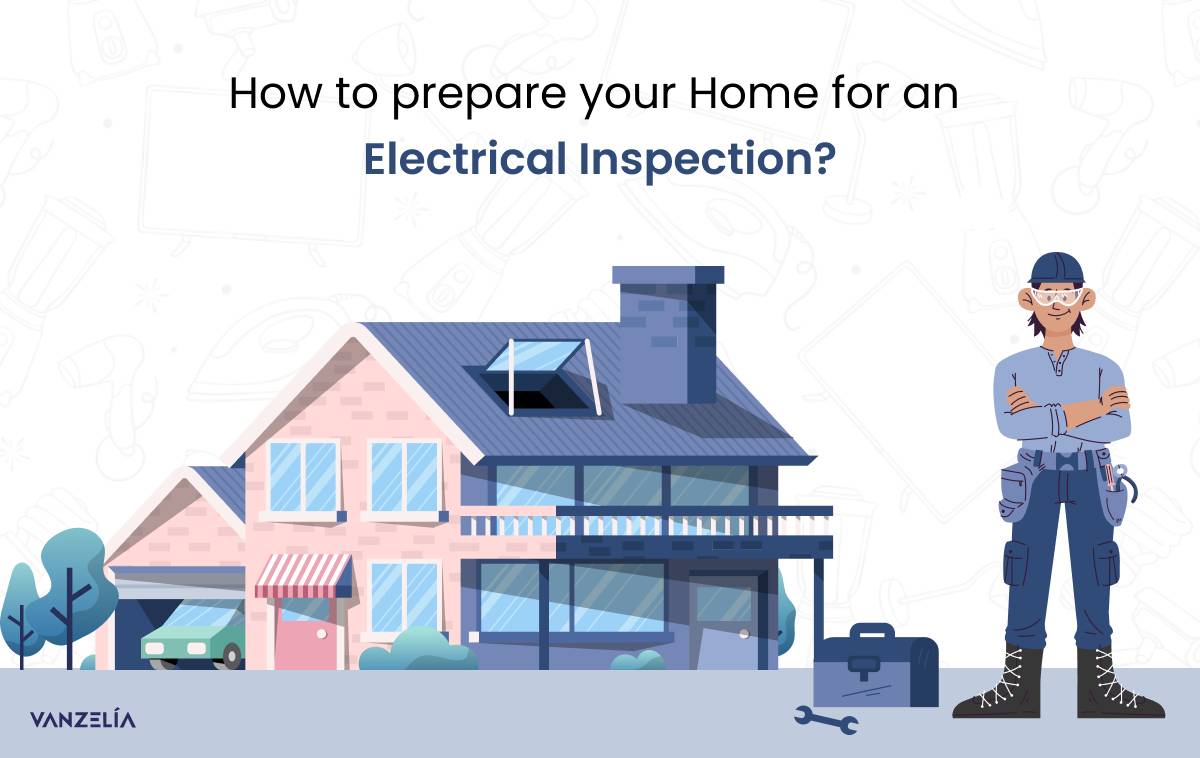Preparing your home for an electrical inspection ensures that everything goes smoothly and helps you avoid potential issues that could result in costly repairs or delays. Whether you’re selling your property, completing renovations, or just ensuring your home’s safety, here are some steps to get ready for an electrical inspection.
1. Understand the Purpose of the Inspection
Safety Assurance: Electrical inspections ensure that all electrical systems and components in your home meet safety standards and are functioning correctly.
Code Compliance: Inspectors check that your electrical installations comply with local building codes and regulations.
Preventive Measures: Inspections help identify potential issues before they become serious problems, saving you money and enhancing safety.
2. Check and Fix Common Issues
Loose Outlets and Switches: Ensure all outlets and switches are securely mounted. Loose fixtures can be a sign of poor installation or wear and tear.
Replace Burnt Out Bulbs: Replace any burnt-out light bulbs to demonstrate that fixtures are operational.
Functioning Smoke Detectors: Test all smoke and carbon monoxide detectors to ensure they are working properly. Replace batteries if needed.
3. Organize Electrical Panels
Clear Access: Make sure your electrical panel is easily accessible. Remove any obstructions that could hinder the inspector’s ability to access it.
Label Circuits: Label each circuit in your electrical panel clearly. This helps the inspector understand the distribution of power throughout your home.
Panel Cover: Ensure the cover of your electrical panel is securely in place and free of damage.
4. Inspect Wiring and Cables
Check for Exposed Wiring: Inspect your home for any exposed wiring and secure it properly. Exposed wires can pose a significant safety risk.
Tidy-Up Cables: Ensure that cables are neatly arranged and not tangled or running in unsafe locations.
Inspect for Damage: Look for signs of wear, fraying, or damage in wires and cables. Replace any that appear to be compromised.
5. Ensure Proper Grounding
Ground Fault Circuit Interrupters (GFCIs): Install GFCIs in areas where water is present, such as kitchens, bathrooms, and outdoor outlets. These devices protect against electrical shocks.
Check Grounding: Verify that all outlets and electrical systems are properly grounded. Ungrounded outlets can pose serious safety risks.
6. Review Circuit Load and Capacity
Avoid Overloading: Ensure that no single circuit is overloaded with too many devices or appliances. Overloaded circuits can trip breakers and cause electrical fires.
Appropriate Circuit Use: Make sure high-power appliances are on dedicated circuits as required by the code.
7. Test and Maintain Appliances
Check Appliances: Test all electrical appliances to ensure they are functioning properly. Faulty appliances can indicate broader electrical issues.
Service Large Appliances: Have large appliances like HVAC systems, water heaters, and ovens serviced regularly to ensure they are in good working order.
8. Prepare Documentation
Permits and Past Inspections: Gather any relevant documentation, including permits and records of past inspections or electrical work. This information can be helpful to the inspector.
Warranty Information: Have warranties for electrical appliances and systems ready in case the inspector needs to reference them.
9. Hire a Professional Pre-Inspection
Pre-Inspection: Consider hiring a licensed electrician to perform a pre-inspection. They can identify and address issues before the official inspection, increasing the likelihood of passing.
Professional Advice: A professional can also provide advice on any upgrades or repairs needed to meet current electrical codes and standards.
Conclusion
Preparing your home for an electrical inspection involves checking and fixing common issues, organizing your electrical panel, inspecting wiring, ensuring proper grounding, reviewing circuit load, and maintaining appliances. Taking these steps not only helps you pass the inspection but also ensures the safety and efficiency of your home’s electrical system. By being proactive and thorough, you can avoid potential issues and make the inspection process as smooth as possible.

